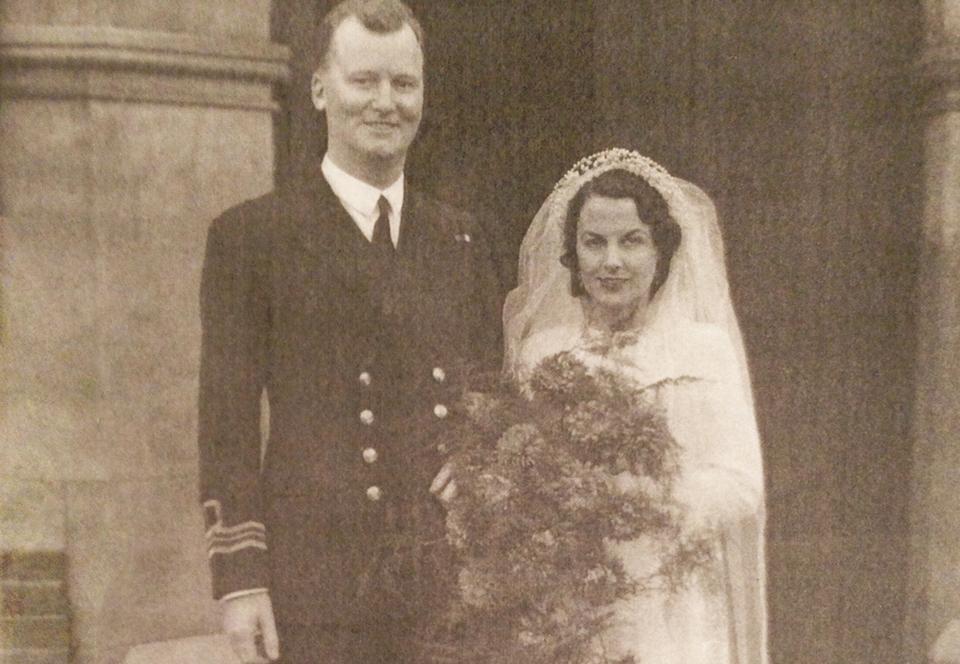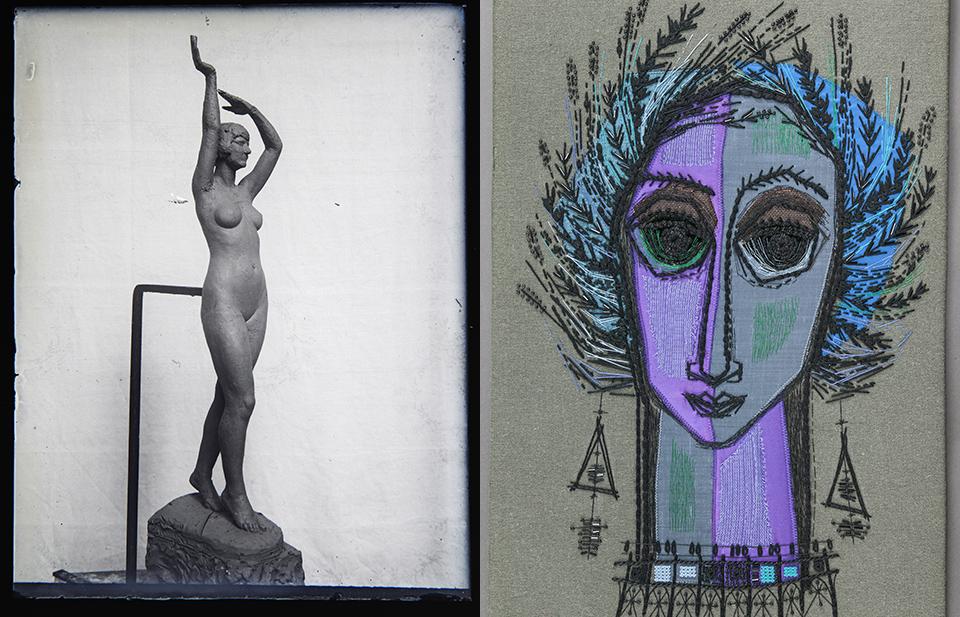True love found in Goldsmiths' art collection
Primary page content
Evidence of decades-old romance has been uncovered in the Goldsmiths, University of London art collection. As Art Collection Officers Cecily Rainey and Tamar Hemmes discovered, the relationships – one between lecturers, another between students – blossomed into marriages.

Joseph and Muriel Huddart met while studying at Goldsmiths in the 1930s
Tamar and Cecily unearthed a fascinating assortment of artworks on display in our buildings and carefully tucked away in storage - material that gives an invaluable insight into past life at Goldsmiths.
In 1999, two oil paintings were donated to Goldsmiths that now form part of the art collection. They had belonged to Joseph Taylor Huddart, who attended teacher training at Goldsmiths in the 1930s, and were generously donated to Goldsmiths by his son Robin Huddart who also provided a wedding photo of his parents.
Joseph had been a Watchkeeping Officer with the Pacific Steam Navigation Company. His politics were left of centre; he was widely read and interested in poetry, philosophy and economics. In his covering letter Robin says his father came to Goldsmiths after being made unemployed during the economic slump of the 1930s and while at the College he met Robin’s mother, Muriel.
“[Joseph] attended Goldsmiths teacher training college where he set his cap at Muriel, reputed to be the prettiest girl in the College,” writes Robin. “He was tall with a romantic background, but Muriel was very much under her mother’s influence. She was a leading member of the British Legion and a staunch conservative. Joe did not receive full approval.”
Tamar says: “After studying here, Joseph joined the Royal Navy during WII. He was a treasurer of the Students’ Union and was given a life-long membership card of the University of London, which he used frequently to take Muriel and his two sons to the main London University Students’ Union building for 'cheap beer'.”
The two paintings donated by Robin are John Bratby, Sunflowers and Terence Scales, Scotney Castle.
In the basement of Deptford Town Hall you'll find the Constance Howard Gallery and a sculpture of a female nude - unexpected links to a romance between two Goldsmiths lecturers.

(Glass plate showing Harold Wilson Parker's clay sculpture 'Flossie', and embroidery by Constance Howard)
“Constance Howard joined Goldsmiths staff as a part-time tutor in 1947,” explains Cecily. “She went on to establish a Department of Embroidery, while also becoming the Principal Lecturer in charge of textiles and fashion. An artist herself, Howard’s embroideries can be found in collections around the world while three of her works remain in the Goldsmiths collection.
“In 1945, she married Harold Wilson Parker, a sculptor responsible for the design of the wren on the reverse of the farthing coin that was used until 1956. Like Howard, Parker taught at Goldsmiths for a number of years, from the 1940s until around 1955.”
In the online database Mapping the Practice and Profession of Sculpture in Britain & Ireland 1851-1951, Margaret Langworth, a former student of Harold’s, noted that: “He was a very quiet, gentle little man, who simply asked you to look, study every angle as most people, at first, find it hard to imagine in the round not just to take in the flat (what you are facing). Parker taught us the basics not just of being a sculptor, but also an architect and engineer. He wanted us to know our anatomy, how to cast statues, set up armatures, know how to divide up a piece to be cast into sections with shims – again, requiring the ability to see, think and act in a very practical, scientific way.”
Several plaster sculptures by Harold can still be found at Goldsmiths, most notably the large standing nude female of over two meters in height that is on display in Deptford Town Hall, next to the stairs that lead to the gallery named after his wife.
“The collection is home to many plaster and metal casts for medals that were to be used for a variety of purposes, such as prizes for sports events and awards for associations for engineers and surgeons,” says Cecily. “Parker designed the World War II Defence Medal which was awarded to military and non-military personnel who served in the UK or overseas during the conflict. Though we do not know for sure that the sculptures and medals in the collection were made by him, they do seem to be in the same style as his known works.”
While working on the Art Collection inventory, Tamar and Cecily also came across four boxes of photographic glass plates in an old filing cabinet in Deptford Town Hall.
According to student accounts, Harold seems to have been the only member of staff in the 1940s and '50s to own a camera. Considering this and the fact that many of the plates depict sculptural works made by him, it is likely that these photographic pieces belonged to him. Besides depicting finished sculptures that can be found in the Goldsmiths collection, the photographs appear to have been used as studies for artworks, showing stone architectural elements and life models.